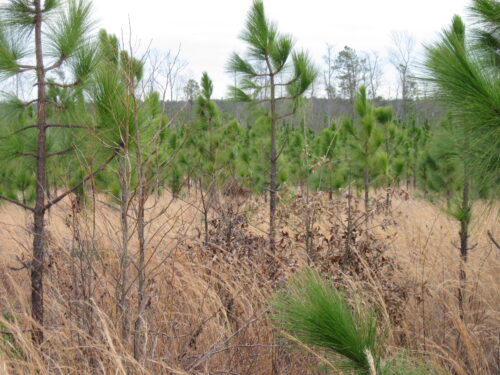Pine Trees – the Pioneers of the Forest
There are numerous types of pines throughout Virginia. Loblolly, shortleaf, white, and Virginia pine are the most common and the most commercially valuable. All of these pines are “sun-loving” trees that grow best when they have full sunlight. They grow fast and outcompete other trees in areas where there has been some sort of disturbance that causes an opening in the forest. This may be a natural event like a storm blowing down trees, or a forest management event like a tree-harvesting operation. Pine seedlings become established quickly, usually in large numbers, in order to occupy the opening. However, these “pioneer” trees that become established quickly and grow fast don’t usually live as long as seedlings that grow more slowly and take a longer time to become dominant trees in the forest. If they are left unmanaged, they will likely die and create smaller openings that will be filled with slower growing, longer-lived trees.
Professional foresters can manage these pine tree characteristics to grow trees more quickly and provide a renewable, sustainable, and valuable timber resource for Virginia landowners. While pines make up only 20% of the forests, they grow fast and produce approximately 45% of the annual wood volume harvested. A planned program of forest management practices selected to establish and grow the pine trees will greatly improve the long-term management options of the forest.
Pine Management Practices
- Site Preparation – Preparing the land for planting tree seedlings
- Using herbicides to remove competing plants
- Using large machines to remove competing plants and clear areas to plant
- Using prescribed burning to remove debris and competing plants
- Planting – Planting tree seedlings
- Hand planting
- Machine planting
- Release – Competition control
- Mechanical
- Herbicide
- Thinning – Removing small and/or deformed trees
- Pre-commercial
- Commercial
- Fertilizing – Feeding the trees
- Natural Regeneration – Regenerating a stand of trees using seed from trees either on-site or nearby

